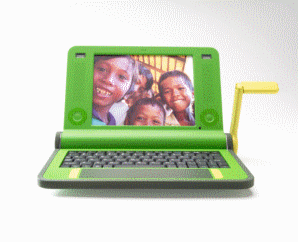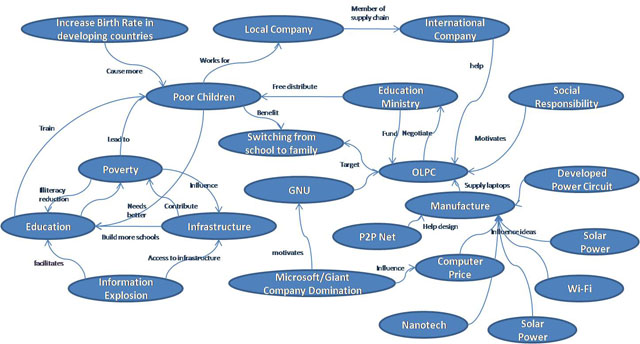Difference between revisions of "The future of the $100 laptop in 2017"
m (→Related Links) |
m (→Related Links) |
||
| Line 111: | Line 111: | ||
*[http://news.bbc.co.uk/2/hi/technology/6908946.stm '$100 laptop' production begins] | *[http://news.bbc.co.uk/2/hi/technology/6908946.stm '$100 laptop' production begins] | ||
*[http://news.bbc.co.uk/2/hi/technology/6897950.stm Intel and $100 laptop join forces] | *[http://news.bbc.co.uk/2/hi/technology/6897950.stm Intel and $100 laptop join forces] | ||
*[http://news.bbc.co.uk/2/hi/technology/6932897.stm Low-cost PC aims at rural China] | |||
<hr /> | <hr /> | ||
<pagerating from="Bad" to="Good" category="Scenario">Rate this page</pagerating> | <pagerating from="Bad" to="Good" category="Scenario">Rate this page</pagerating> | ||
Revision as of 15:40, 6 August 2007
Introduction
|
|
The "$100 laptop" is a more popular name for a project set up by One Laptop per Child (OLPC) association. The $100 laptop was a result of research initiative by MIT Media Lab in January 2005 in its effort to create a technology that will revolutionise child education in the world.
One Laptop per Child (OLPC) is a non-profit organisation that was established to achieve its goal. It is independent of MIT and is strongly sending the message to the world that this is not a laptop project but an education project.
Children in rural areas--especialy in developing countries--have very little, if not deprived of, access to school. The conventional solution to this issue is to build a school and train teachers. But it is perhaps the slowest way. OLPC is a breakthrough that will give the rights to education to these children.
At the end of November 2006, the $100 laptop was proudly presented to the public. Despite the price and the intended users, the machine boasts a remarkable complete sets of software that helps broaden the mind and creativity of a child. This was made possible by the strong support of open-source community in building this system so that the price can be kept low.
Our research is to study the future of this education project in 2017 considering various driving forces from technological to socio-political aspects. The motivation behind this research choice is the noble and excellent idea of this project as well as the technology applications in it.
Aki Baihaki, Sonny Nyeko, Jason Tsai, Wang Xin
Research Questions
Click here for our Complete list of our research questions
Driving Forces
- Political & Social Forces
- Economic Forces
- Science & Technology Forces
- Resource & Environment Forces
- Population & Demographic Forces
Diagrams
Scenarios
Frequently Asked Questions
References
video
- One Laptop Per Child laptop (Exclusive)
- One Laptop Per Child computer
- Slightly better demo of the OLPC User Interface
Related Links
- Our Video Presentation
- One Laptop per Child
- MIT Media Laboratory
- OLPC Wikipedia
- The Making of $100 Laptop
- '$100 laptop' sparks war of words
- Meet the XO
- Intel steps up cheap laptop race
- Intel not being a good classmate
- $100 laptop set for launch
- $100 laptop could sell to public
- Intel and $100 laptop join forces
- '$100 laptop' production begins
- Intel and $100 laptop join forces
- Low-cost PC aims at rural China
<pagerating from="Bad" to="Good" category="Scenario">Rate this page</pagerating>




